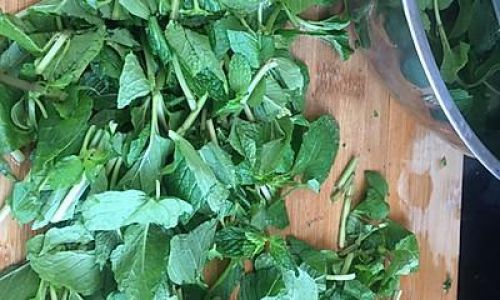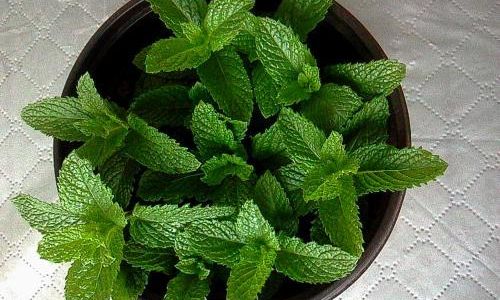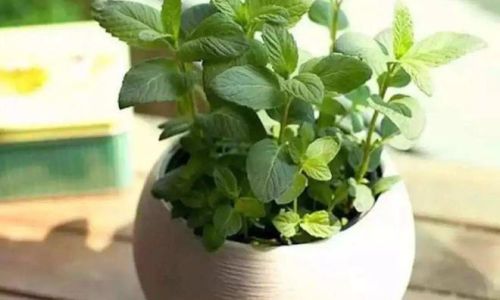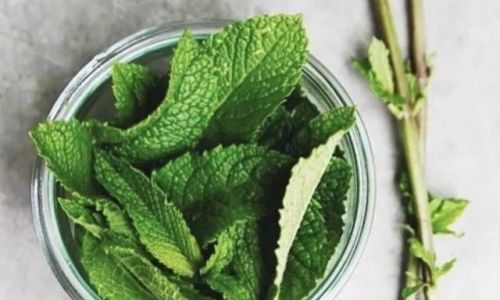Table of content
Mint leaves, with their refreshing aroma and versatile culinary uses, are a staple in kitchens, teas, and cocktails worldwide. However, these delicate herbs can wilt or lose their potency quickly if not stored properly. Whether you’ve harvested mint from your garden, purchased a bulk bunch, or received a surplus from a friend, learning how to preserve mint leaves ensures you can enjoy their vibrant taste and fragrance for months. This guide explores seven effective methods to store mint, along with tips to avoid common pitfalls and maximize shelf life.
Selecting the Freshest Mint Leaves
Before diving into preservation techniques, start with high-quality mint. Look for leaves that are bright green, firm, and free from blemishes or yellowing. Avoid bunches with slimy stems or dark spots, as these indicate decay. Gently shake the mint to dislodge any hidden insects or debris—no need to wash yet, as excess moisture can accelerate spoilage.
Refrigeration: The Quick Fix for Short-Term Use
Refrigeration is ideal if you plan to use mint within a week. Here’s how to extend its freshness:
- Trim the Stems: Cut ½ inch from the bottom of the stems using sharp scissors or a knife. This removes dried-out ends and allows the mint to absorb water.
- Hydrate the Leaves: Place the mint bunch in a jar or glass filled with 2–3 inches of cool water, like a bouquet.
- Cover Loosely: Drape a plastic bag or reusable produce cover over the leaves, ensuring it doesn’t trap moisture against them.
- Store in the Fridge: Place the jar in the refrigerator’s crisper drawer, where temperatures hover around 32–40°F (0–4°C). Change the water every two days to prevent bacteria growth.
This method keeps mint crisp for up to 10 days. For a quicker option, wrap damp mint leaves in paper towels and seal them in an airtight container. However, this may limit lifespan to 5–7 days.
Freezing: Locking in Flavor for Months
Freezing is the gold standard for long-term mint preservation. It halts enzymatic activity, preserving color, aroma, and nutrients. Try these techniques:

A. Ice Cube Trays
- Chop or Leave Whole: Finely chop mint leaves or keep them whole, depending on your preference.
- Fill Trays: Place mint into ice cube tray slots and cover with water, broth, or olive oil. Oil prevents freezer burn and infuses flavor into dishes.
- Freeze Solid: Once frozen, transfer cubes to a labeled freezer bag. They’ll last 6–12 months.
B. Flash Freezing
- Spread on a Tray: Line a baking sheet with parchment paper and arrange mint leaves in a single layer.
- Freeze Until Solid: This prevents clumping, allowing you to grab handfuls as needed.
- Transfer to Bags: Store in airtight freezer bags, squeezing out excess air.
C. Freezer-Safe Containers
- Pack Tightly: Fill containers with whole or chopped mint, leaving ½ inch of headspace for expansion.
- Label Clearly: Note the date and contents to avoid confusion later.
Drying: A Traditional Approach for Herbal Storage
Dried mint retains its essence for 1–3 years, making it perfect for teas, spice blends, and potpourri. Choose from three drying methods:
A. Air Drying
- Hang Bundles: Tie 5–6 mint stems together with twine and hang upside-down in a warm, dark, well-ventilated area (like a pantry).
- Wait Patiently: Leaves will crumble in 1–2 weeks. Store in airtight jars away from light.
B. Oven Drying
- Preheat Oven: Set to the lowest temperature (ideally below 180°F/82°C).
- Spread Leaves: Lay mint in a single layer on a baking sheet.
- Bake Gently: Check every 15 minutes until leaves crumble easily (1–2 hours).
C. Dehydrator Drying
- Set Temperature: Use a dehydrator at 95–115°F (35–46°C).
- Layer Leaves: Arrange mint on trays without overlapping.
- Dry Until Brittle: This takes 4–8 hours, depending on humidity.
Pro Tip: Dried mint’s flavor is more concentrated than fresh. Use 1 teaspoon of dried mint per tablespoon of fresh in recipes.

Infusing in Oil or Vinegar
Preserve mint’s essence in liquids for dressing, marinades, or gifts:
- Oil Infusion: Pack clean, dry mint leaves into sterilized jars and cover with olive oil. Seal and store in a cool, dark place for 4–6 weeks. Strain before use.
- Vinegar Infusion: Submerge mint in white wine or apple cider vinegar. Let sit for 2–3 weeks, then strain. Use in salad dressings or as a cleansing toner.
Creative Preservation Hacks
- Mint Sugar: Blend mint leaves with granulated sugar and store in an airtight jar. Use in coffee, desserts, or as a rimming sugar.
- Mint Salt: Mix chopped mint with coarse salt for a vibrant seasoning for meats or roasted vegetables.
- Mint Pesto: Freeze pesto in ice cube trays for instant flavor boosts in pastas or soups.
Common Mistakes to Avoid
- Washing Before Storage: Moisture invites mold. Rinse mint only right before use.
- Storing in Plastic Bags Without Ventilation: Mint needs airflow; use breathable bags or containers with holes.
- Ignoring Temperature Fluctuations: Avoid placing mint near vents, doors, or ethylene-producing fruits like apples or bananas.
- Overcrowding Containers: Leaves need space to breathe; don’t pack them tightly.
When to Toss Mint
Discard mint if it develops:

- A slimy texture
- Dark, mushy spots
- A foul odor
- Fuzzy mold (usually gray or white)
Conclusion
Preserving mint leaves is a blend of science and creativity. Whether you opt for the immediate freshness of refrigeration, the longevity of freezing, or the rustic charm of drying, each method ensures this versatile herb enhances your dishes long after harvest. Experiment with infusions and culinary twists to make the most of your mint stash. With proper care, you’ll never waste a single leaf again—and your mojitos, teas, and salads will thank you.
By mastering these techniques, you transform a fleeting herb into a year-round pantry staple, proving that mint’s zingy spirit need not fade with the seasons.






0 comments